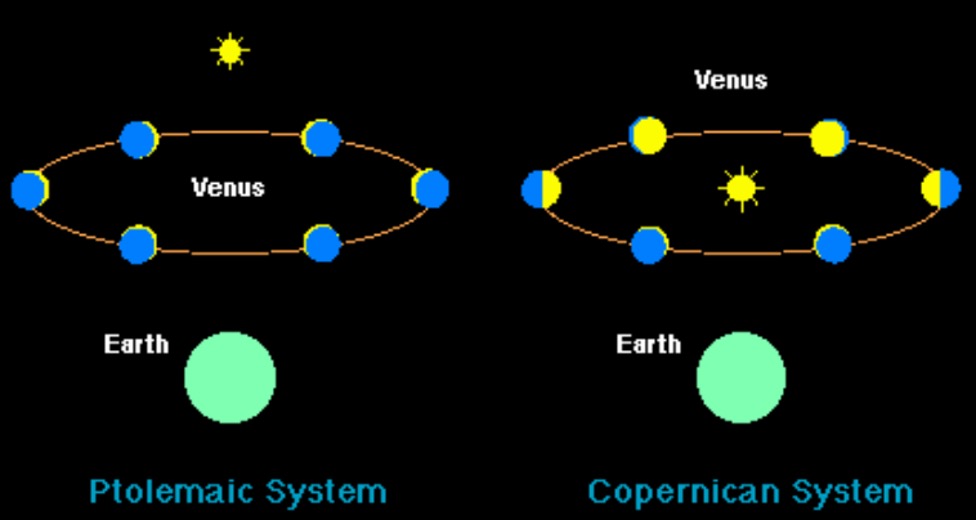The Cosmology of Geocentrism versus Heliocentrism: A Personal Experience

At about 6:30 AM on August 1, 2020, while standing in a hay field in rural Colorado, I noticed a bright object on the Eastern horizon. History came rushing in when I saw through my telescope the half phase of Venus.

I shouted with joy. At that very moment, I was experiencing 410 years later Galileo’s revolutionary discovery of 1610: An earth-centered world could not produce half phases of Venus.

A renaissance polymath, Galileo Galilei was born in 1564, the same year as William Shakespeare. Having heard of Hans Lipperhey’s design “for seeing things far away as if they were nearby”, Galileo crafted what may have been the first instrument of its kind. The diameter of his telescope was approximately 38 millimeters, which gathered about 73,000 times less light than the 10,400-millimeter Gran Telescopio Canarias! Nonetheless, in Galileo’s hands this primitive device was to carry forward the Copernican revolution which forced us to relinquish our privileged position in the universe.
Earth-centered cosmology began as early as the 4th Century BCE with the philosopher Aristotle. In the 3rd Century BCE, Aristarchus of Samos advocated a sun-centered view. In the 2nd Century AD, Egyptian astronomer and mathematician, Claudius Ptolemy, promoted geocentrism but had to use epicycles to explain his detailed observations. At the time, geocentrism was a reasonable scientific theory. After all, the sun “moved” across the sky. Furthermore, if the earth orbited the sun, one should observe parallax, the apparent movement of a star against background stars. Seeing none, Ptolemy argued that his theory was confirmed. In fact, the parallax of a star could not have been discerned without a telescope… a parallax finally documented by Friedrich Bessel in 1838.
Last August, I once again felt close to Galileo while photographing the moons of Jupiter changing position every night. I correlated my observations with the nightly positions of Jupiter’s moons as presented in the publication, Astronomy, and thus was able to label its moons.

The orbital period of Callisto is 16.689 days; in my photographs, Callisto is in about the same position on August 9, 2021, as it is 17 days later, on August 26, 2021. The photographs also confirm the orbital period of Ganymede, which is 7.155 days; Ganymede is in approximately the same position for the two 7-day intervals: from August 9–16, 2021 and from August 16–23, 2021.
Although he had no way of determining the identity of each satellite over time, Galileo documented the 4 moons orbiting Jupiter over many nights.

From: Debarbat S and Wilson C. 1989. The Galilean Satellites of Jupiter from Galileo to Cassini, and Bradley, in The General History of Astronomy. Vol. 2A, Eds. R Taton and C. Wilson, Cambridge University Press, pages 144-157.
As with the phases of Venus, Galileo’s observations of Jupiter’s moons contradicted Ptolemy’s theory that everything must orbit the earth. Pope Urban VIII would force Galileo to recant his heliocentrism on penalty of torture and death and would place him under house arrest for the rest of his life. However, the destruction of geocentrism had begun, and the world would never be the same.




